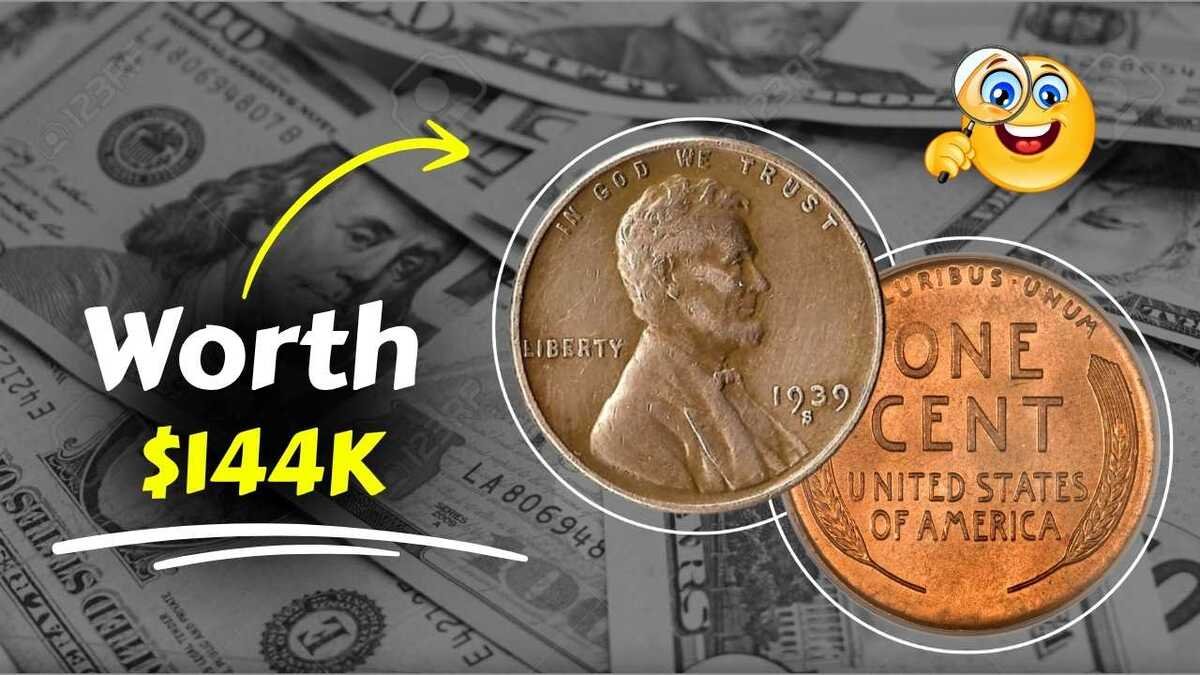Every now and then, history finds its way into our pockets often disguised as something ordinary. One such example? The Lincoln Wheat Penny. What many see as a simple, outdated coin could actually be worth thousands even as much as $144,000. Surprised? You’re not alone. These unassuming pennies are still out there, tucked away in coin jars, drawers, and yes even in everyday change. So, how do you know if you’re holding a fortune? Let’s dive in.
A Penny with a Past
The Lincoln Wheat Penny first rolled out of the U.S. Mint in 1909, introduced to mark the 100th anniversary of President Abraham Lincoln’s birth. Designed by Victor David Brenner, it was the first U.S. coin to feature a real person’s face setting a trend that continues today.
On one side, Lincoln’s profile stands proud. On the reverse? Two wheat stalks circling the words “ONE CENT.” It’s a classic, vintage look that captured the spirit of early 20th-century America. Over the decades, more than 20 billion were minted, making them easy to come by until you start looking for the rare ones.
Why Some of These Pennies Are Worth a Small Fortune
Not all Lincoln Wheat Pennies are created equal. Some were printed in such low numbers or with such unusual features that collectors today are willing to pay big money for them.
One of the most valuable is the 1943 Bronze Lincoln Wheat Penny. During World War II, pennies were mostly made of steel due to a copper shortage. But a few bronze planchets (the blank metal discs used for coins) were mistakenly used. The result? A rare 1943 bronze penny that has sold at auction for as much as $144,000, and in some cases, even more.
Here are a few key examples that collectors look for:
| Year | Mint Mark | Unique Feature | Potential Value |
|---|---|---|---|
| 1943 | No/S/D | Struck in bronze instead of steel | Up to $144,000 |
| 1909 | S VDB | Rare initials on reverse | Up to $530,000 |
| 1914 | D | Low mintage in Denver | Up to $150,000 |
| 1922 | No D | Missing mint mark from Denver issue | Up to $50,000 |
How to Tell If You Have One
Think you might have one of these gems lying around? Here’s what to look for:
- Date & Mint Mark: Flip the coin and check the date on the front. Below the date, look for tiny letters:
- “S” = San Francisco
- “D” = Denver
- No letter? Minted in Philadelphia.
- The 1943 Test: If you have a 1943 penny, grab a magnet. If it sticks it’s steel (common). If it doesn’t, it could be bronze (rare and valuable).
- Look for “VDB”: Especially on 1909 pennies, check the reverse side for the tiny initials VDB near the bottom rim, between the wheat stalks. If it’s also an “S” mint (1909-S VDB), you may have a small treasure.
- Condition Matters: A coin in mint or “uncirculated” condition will fetch far more than one that’s worn. Use a magnifying glass to inspect the detail. Sharp lines and little wear mean higher value.
They’re Still Out There
It might sound unlikely, but these rare coins are still turning up in circulation. People unknowingly spend them, or they get passed down through generations, forgotten in old piggy banks or inherited collections.
In fact, several lucky individuals have stumbled upon rare Wheat Pennies in the most unexpected places garage sales, pocket change, or rolls of coins from the bank. One man found a 1943 bronze penny in a high school cafeteria tray. He later sold it for six figures.
Want to Go Treasure Hunting?
If this has you eyeing your spare change a little closer good. You don’t have to be a professional collector to start looking. Here are some tips:
- Search Bank Rolls: Buy rolls of pennies from your bank and sift through them.
- Check Inherited Collections: Old coin jars, cigar boxes, or grandfather’s stash might hide surprises.
- Use a Magnifier: Details like mint marks and initials are tiny don’t miss them.
- Learn from the Pros: Read collector guides like The Red Book, or join online coin forums to learn what to watch for.
- Get it Verified: If you find something interesting, have it evaluated by a certified coin dealer or grading service.
Final Thoughts
Who knew a single penny could hold so much potential? The Lincoln Wheat Penny isn’t just a coin it’s a piece of history that could be worth thousands, even $144,000, if you’re lucky. So next time you receive change at the store or go digging through your coin jar, take a second look.
Because one of the most valuable coins in America might already be in your hands.




